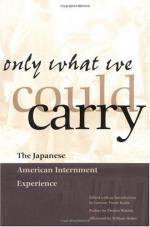|
This section contains 372 words (approx. 2 pages at 300 words per page) |

|
Though the relocation of Japanese Americans remained relatively unchallenged (the JACL encouraged Japanese to comply with evacuation orders, believing it was the best way to demonstrate loyalty), a few Japanese Americans did challenge the legality of Executive Order 9066 in the courts. The two most prominent cases were those of Fred Korematsu and Mitsuye Endo. In 1942 Fred Korematsu, a welder who refused to leave his home in San Leandro, California, was arrested for violating the exclusion order. Korematsu, with help from the American Civil Liberties Union (ACLU) in Northern California, challenged the government's policy on the grounds that the government had no right to remove and imprison a race of people because of their ancestry. In 1944 the Supreme Court upheld Korematsu's conviction by a 6–3 vote, ruling that Korematsu was not excluded because of his race. The tribunal concluded that he
was excluded because we are at war with...
|
This section contains 372 words (approx. 2 pages at 300 words per page) |

|




